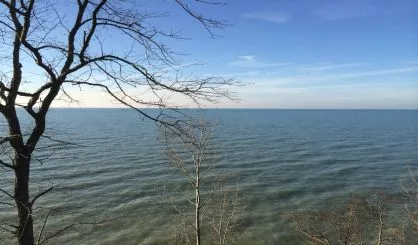
Sand, sticks, and invasive zebra mussels are messing up St. Joseph’s water intakes.
At Monday’s St. Joseph City Council meeting, members approved $132,500 to clean the city’s primary water intake from Lake Michigan, a move aimed at ensuring the continued delivery of fresh water to residents and preventing costly long-term damage to the system.
The work will be performed by Underwater Construction Corporation of Stevensville, which specializes in municipal water and power plant intakes. The company’s divers will remove invasive zebra and quagga mussels and clear significant sand buildup from the north intake’s inlet structures, connecting “Y” pipe, and a main pipeline section that extends into the lake.
City Manager Emily Hackworth explained the buildup, according to water system experts, was unexpected.
“We look at this every year, and for whatever reason, this year, there was a lot more than we expected. And from time to time, that can happen.”
The north intake, built in 2011, replaced the city’s 1957 south intake as the primary water source. Its design allows it to handle up to 40 million gallons a day — more than double the older intake’s capacity — and it was positioned in deeper water to reduce problems from drifting sand, temperature changes, and frazil ice. The south intake is now kept as a backup and exercised periodically.
A routine July inspection by Underwater Construction revealed extensive mussel growth on both the inside and outside of the north intake’s structures, along with heavy sand infiltration. Divers were unable to enter one connecting leg due to sand blocking 80 percent of its diameter, which forced more water — and sand — through the other leg.
“It could have been a storm that sort of hit in just the right way. We don’t exactly know the explanation for why this year, when we looked at it, it was worse than the routine review we saw in previous years,” said Hackworth.
The cleaning will be carried out in two phases. The first covers the inlet structures and connecting pipes, estimated to take about eight days. The second will address the main pipeline to a midpoint between the structures and an emergency riser, with 20 days of diving planned.
According to city staff, the main line has not been cleaned to this extent since 2018. Removing the sand now will help prevent it from reaching the longer inner pipeline, which is much harder to access and clean.
Officials expect that, once complete, the intake should remain clear for 14 to 15 years if annual maintenance continues. The south intake does not require cleaning at this time, as it has minimal mussel coverage and no sand buildup.
The project will be funded through an amendment to the city’s Fiscal Year 2026 Water Fund Budget.








